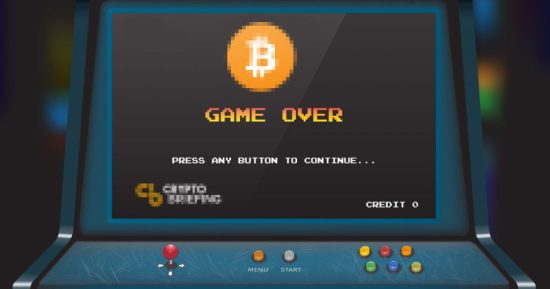Gaming extends beyond attractive visuals and captivating plots. Ultimately, it hinges on the user experience, with smooth operation as a critical component achieved via testing. Lessons learned from conventional video game testing span numerous years.
Author: William Westerlund
However, we now face an emerging trend: crypto games. These innovatively merge gaming and blockchain technology. But how does testing adapt to this intersection of two diverse realms? Let’s explore!
Old-School Gaming and the Crypto Frontier
Testing in gaming isn’t just ticking boxes. It’s a complex dance of checking everything – from the basics to the tiny details – ensuring gamers get the best ride possible.
Whether it’s the traditional realm of video games or the innovative sphere of crypto gaming, like the mBitcasino crypto jackpot, these methodologies remain relevant, albeit with unique nuances. But don’t sweat it; we’ll break down how the best practices from our beloved old-school games can help us navigate this new crypto playground.

The Scope of Testing
Defining the scope of testing is a foundational step in any testing endeavor. Traditional games prioritize functional testing to match game features with design intentions.
The function of compatibility testing lies in assuring the smooth operation of games across different setups. Similarly, localization testing modifies them to suit an array of languages and cultures. On another note, crypto games give prominence to smart contract testing for secure game mechanics that reflect accuracy. Moreover, token integration tests bear great importance in validating seamless transactions using crypto tokens.
While functional and compatibility testing is essential for both types, crypto games need extra emphasis on blockchain-specific elements.
Automation and Continuous Integration
Game development, in its swift evolution, now deems automation and continuous integration essential for the testing process. Developers who employ these strategies not only hasten the testing phase but also improve the quality of their finished product.
Traditional games have found tools such as Selenium and Appium beneficial. These facilitate routine test automation and confirm new codes do not interrupt existing features. Crypto games, however, with their particular complexities, need distinct tools. The Truffle Suite is one such tool designed specifically for Ethereum smart contract testing to ensure a flawless blockchain operation.
No matter the gaming platform, the underlying objective remains consistent: leverage the power of automation and continual testing to maintain and elevate game quality.
Security Testing
This particular test targets weaknesses and dangers to strengthen software against harmful attacks, thereby securing user data. For orthodox games, it involves the proactive detection of possible hacker access points and the establishment of robust privacy protections for in-game transactions and data handling.

Meanwhile, in the realm of crypto games, the stakes are amplified. Here, security measures extend to rigorous smart contract audits and preventative measures against pitfalls like reentrancy attacks or integer issues. Given the financial implications of crypto games, ensuring robust security is paramount.
Performance Testing
Performance testing extends past the allure of a game’s visuals or captivating story. It probes into central performance, measuring stability, responsiveness and velocity to furnish seamless player experiences, even under substantial system load.
In conventional games, this encompasses comprehensive load tests and stress assessments to secure smooth gameplay in strenuous settings.
Crypto gaming requires a shift in performance optimization focus. Instead of the usual criteria, “gas optimization” takes precedence.
This involves fine-tuning smart contracts to operate with efficiency and minimal resource usage, saving costs. Evaluating the scalability of the foundational blockchain also becomes vital to anticipate and manage expansion. As such, crypto gaming introduces a financial component into traditional games’ emphasis on user experience.
Usability Testing
Usability testing delves into the very heart of what makes a game resonate with its audience. Beyond mere functionality, it assesses the intuitive nature of a game’s user interface, its design, and the overall experience it delivers.

In traditional gaming realms, this often translates into gathering valuable feedback from players about various facets like gameplay mechanics, visual aesthetics, and narrative depth.
Crypto games present two chief difficulties. Firstly, they must provide riveting gameplay. Secondly, they need to make crypto transactions, wallet configurations and token exchanges simple and understandable even for the uninitiated. In essence, user-friendliness in crypto games depends on seamlessly integrating gaming elements with cryptocurrency components.
Regression Testing
Games often receive updates with fixes or new features. With these, past functions may experience disruption. Regression testing plays a vital role; it retests existing features to ensure that the additions do not negatively affect the systems in place. Both fields need to prioritize regression testing so that any fresh updates or features do not introduce unseen bugs or security risks into their system.
Final Words
Examination of both traditional and crypto games centers on safeguarding quality along with user satisfaction. As blockchain applications spread into the gaming domain, approaches to game testing must expand correspondingly.
Developers can enhance their offerings by acknowledging and applying these methodologies – crafting superior crypto games that allure gamers and cryptocurrency followers alike.
About the Author
William Westerlund is a seasoned gaming enthusiast and software tester with a passion for both fields. With years of experience, he’s honed his skills in testing and debugging, ensuring seamless gaming experiences. His dedication to the gaming industry has made him a valued contributor in the world of game development.

